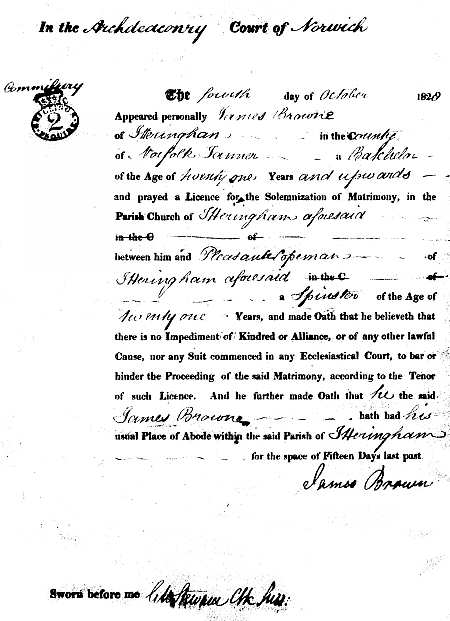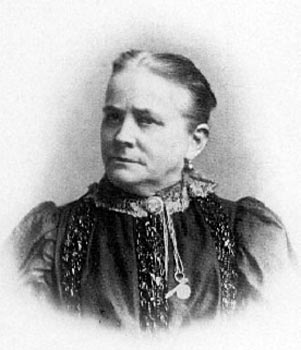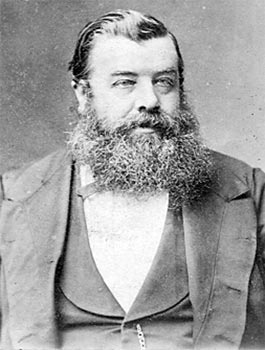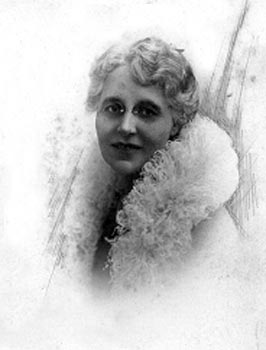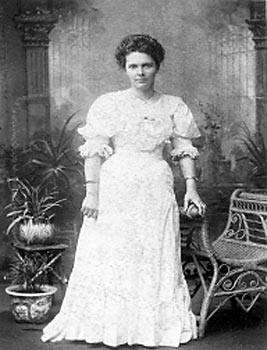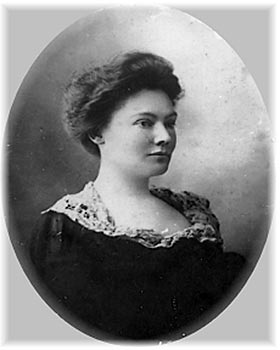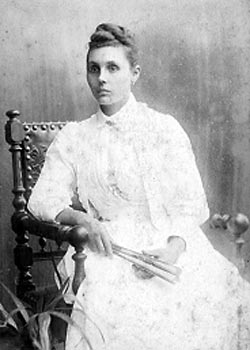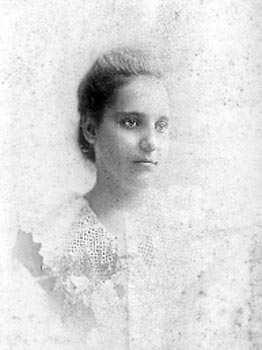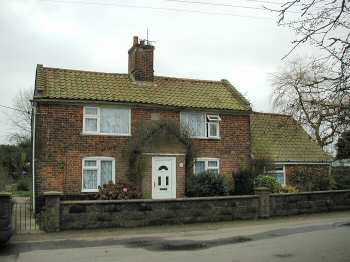JAMES BROWN
James Brown was a farmer and Tanner who leased Bintry Farm or Tanyard Farm, Itteringham, as it was then known, from the Blickling Estate. He was born in June 1807, the fourth son of Edmund and Elizabeth Brown of Erpingham. His exact date of arrival in Itteringham is not certain. We know the first years of the 19C the Tanyard Farm was leased by Richard Garnham. He was certainly still in the village in 1811 when he was the largest landholder.
There is also the record of a marriage in Itteringham between two Garnhams, possibly cousins in 1822, and a record of him farming in 1824, all indicating that a Garnham presence existed until at least the mid 1820s.
The 4th October 1828, at Itteringham, James Brown and Pleasance Reid Copeman, the third daughter of Robert Copeman, both "of this parish", were married by licence.
It is probable that within a few years after this James Brown took over the lease of the property. It does appear that the Browns had some farming experience, evidenced by the land holding in Erpingham that James paid Poll Tax on in 1835. Whether Pleasance’s father Robert Copeman used his influence with the Blickling Estate to arrange the lease and hence a more secure life for his daughter or whether James moved first to Itteringham then met Pleasance is yet to ascertained.
In 1835 James still maintained properties at both Itteringham and Erpingham. As well as being a Farmer, he conducted a Tannery and in 1851 he employed a total of seventeen men.
By 1858 James’ farming and business interests had grown to the point where he made application to convert the buildings of his tannery into Farm buildings. These plans were rejected on the grounds that the fabric of the buildings was not strong enough to withstand the new use. Nevertheless it was about this time that tannery operations ceased and James erected several more quite substantial buildings at Tanyard Farm. On one of these a stone with the date 1858 can still be seen.
James and Pleasance were still living at the 250 acre Tanyard Farm at the time of the 1861 census where the businesses had grow to a point where they now employed thirty one men.
This rather large increase in his business can be closely linked with the expansion of his Dunkirk enterprises in association with his brother-in-law Frederick Copeman.
Apart from his business activities James was very much involved in his local church. He was church warden and his signature, together with those of Rev Robert Walpole and fellow farmer and church warden Thomas Bayes appear inside the cover of the parish Book of Common Prayer with the date September 1854.
There were nine children of the marriage, all of whom were born in Itteringham:
i. James Edward BROWN 5 July 1829.
ii. William BROWN , b. 1832. d before 1883
iii. Fredrick BROWN , b. 1836, d. before 1844.
iv. Alfred BROWN , b. 1839, d. 1864, buried 29 Apr 1864 in Itteringham,
- Catherine Anne BROWN , b. 27 May 1840, d. 7 Dec 1882, buried in Yarmouth
- Fredrick BROWN , b. 1844, b 1875 in Itteringham
- Thomas BROWN , b. 1844 b1860 in Itteringham
- Frank BROWN , b. 1845
- John BROWN , b. 1835.
Pleasance, who was nine years older than James died in 1864. James remained at the farm until at least 1871. His farming activities had slowed down and by 1881 he had ceased farming but was still residing at The Meadow living with two house keepers. He died in 1884 and is interred with his wife in the Itteringham churchyard.
His Will, which was administered at Norwich on the fifth day of March 1884, left an Estate valued at £90/17/00. To have worked as a tanner, a farmer, a miller, a timber and grain merchant and to leave and estate valued at only £90/17/0 seems rather strange compared with the apparent wealth of the Copemans. One must simply assume that the Copemans came from a more affluent start via Robert Copeman's Norwich business whereas James Brown was a young man who married well but had no assets behind him. As a result one can therefore expect the funding for later business expansion, to come disproportionately from the Copemans rather than the Browns and the subsequent profits to have been shared proportionally. The psychology of that whole century would be that real gentlemen were landowners/gentlemen farmers rather than employed in trade. This dynamic would be at work here, indicated by the Copeman’s drift to the countryside whilst the Browns stayed engaged in trade. Both families would probably have had that tendency if they had the chance to act on it.
Copemans and Browns in business
When one looks at the available Trade Directories for Norfolk and in particular for the Itteringham and Aylsham areas it can be seen how the business relationship between the Brown and Copeman families evolved.
Initially Robert Copeman came to Itteringham about 1815 where he was living at White House Farm as a tenant farmer to the Wolterton Estate. In 1828 his daughter Pleasance married James Brown. He was the local tanner who also operated a 250 acre farm leased from the Blickling Estate. After Robert’s death in 1832 his son Frederick not only continued farming but expanded his interests into the Milling Trade. He married in 1843 and by 1850 had moved from White House Farm to Mill House (Blickling_Mill) , taken over the operation of the nearby Itteringham Mill and had expanded his business to a point where he was called a Merchant (Whites 1854). Frederick continued to prosper, leaving the mill at Itteringham to be run by James Brown and establishing the new Steam Mill at Dunkirk in 1856. Dunkirk is a small industrial hamlet in the outlying area of Aylsham on the northern side of the River Bure. In 1860 he also built a large two story house opposite the Mill.
Meanwhile James Brown had also enlarged his operation. From once being a tanner and small farmer by 1850, had expanded his businesses to include “timber, corn, cake (an animal feed), seed, coal, manure” at both Itteringham and Dunkirk as well as an interest in the wherries that were so vital for transport on the canal. With Frederick Copeman’s move to Dunkirk, James’ business interests expanded even further. He took over the running of the Itteringham_Mill from Frederick in 1855 and erected several additional farm buildings at Tanyard Farm.
Frederick’s move to Dunkirk could be looked upon as a co-operative venture with the Brown and Copeman families working as a family group to run a whole cluster of interconnected businesses. Each seems to have retained their autonomy whilst at the same time benefiting from each other. Frederick was obviously the driving force behind the Steam Mill whilst the Browns continued the sawmilling grain, seed etc. One could easily imagine the steam engine providing power for the corn mill while in an adjacent building it was driving the machinery of the timber milling business. Whilst James does not appear to have ever moved his principal residence from Itteringham, Frederick moved to the large Mill House he had built in Dunkirk. At the very most he only lived in it for only four years.
White's Directory of 1864 shows William Utting Copeman, Frederick’s son, as the cornmiller at Dunkirk and most probably residing in the Mill House. This coincides with Frederick’s move to Long Stratton where he is to be found farming over 700 acres. Land possibly inherited from the estate of his wife’s family, Gordon (or George) Howes and Lucy née Utting, who were of Aslacton.
William’s stay at Dunkirk was also short lived. Within a few years he too had moved out and was living in Yarmouth.
Pleasance, James Brown’s wife also passed away in 1867 shortly after their son James Edward returned to Norfolk. He is variously referred to as either James or Edward. I will continue to call him Edward in this section to avoid confusion with his father. Edward had left home, “gone to sea” at a young age, married in Western Australia only to return home in about 1863. Initially he lived at Cawston where he was a farmer, possibly living and working with his unmarried brother Frederick Brown. Following the Copemans’ departure from Dunkirk the Harrod’s Directory of 1868 lists both Edward and another brother, John living in Dunkirk and the Kelly’s Directory of 1869 includes both these two as well as their brother Frederick. In 1871 Frederick Brown had returned to his Cawston farm where he was to die a few years later. Edward and John Brown, with their families remained at Dunkirk where they were they had taken up residence in the Mill House.
Although Frederick Copeman may have retained some financial interest it is obvious that from somewhere about time of his move to Long Stratton and certainly once his son William had moved to Yarmouth the Browns and particularly Edward and John were the driving force behind the running of the business.
This period in the mid to late sixties appears to have been the zenith of the Brown/Copeman business enterprises in Dunkirk.
After the death of his wife (1867) James appears to have left the running of the Dunkirk business to his sons and retreated to his farm where in 1871 his unmarried daughter Catherine is living with him. He is still farming nearly 200 acres but now it is a much smaller operation. A good indication of his business can be gauged from the three census conducted during this period. In 1851 as an active farmer at Itteringham he was employing seventeen men. Ten years later his business had grown to the point where he was employing thirty one men. Some of these would have been employed on the farm some with at Itteringham_Mill but most of the additional men would have been connected with the Dunkirk operations. In 1871 after he had retired back to the farm, relinquished the Mill and having left Edward and John running Dunkirk he was back to employing just seven men and five boys. Obviously this represents a much small enterprise that that of ten years earlier, the difference being that many of those 1861 employees would have remained at Dunkirk and were probably still employed there.
Frederick Copeman had long since departed from Dunkirk and had established himself in Long Stratton where he was resident in Netherton House. In the 1869 Post Office Directory he is also recorded as the principal landowner in the two nearby parishes of Aslacton and Moulton St Michael. He died at Long Stratton in 1877 age seventy.
At the same time, 1869, William Copeman, who had briefly been involved at Dunkirk, was resident at Yarmouth where he was a captain in the 1st Norfolk Artillery Volunteers. There were several other Copeman families in Yarmouth (possibly distantly related) but William is clearly identified by the uncommon second name Utting. He appears to have been an only child but the Utting name has been passed on to many of his children.
By 1881 he was living at Bramerton, a village some 13 miles from Long Stratton, with two more children both born in Aslacton. His occupation is given as landowner, possibly the same land owned and farmed by his father. William died in the latter half of 1881.
So by 1871 Edward, John and their families were the only family members who still retained an active interest at Dunkirk. Even this was not to last very long. In 1872 Edward was the publican at the nearby Royal Oak public house. There is a James (Edward) Brown, possibly our man recorded as living in the nearby village of Drabblegate in 1875. This would indicate that he was no longer living at the Mill House and probably severed his association with the mill about the same time as it was taken over by Thomas Shreeve. We also know that James suffered from a lung complaint so it is possible that was another reason for him to leave the mill and its dusty environment. He is also recorded as being a beer retailer of Dunkirk in 1877 (no address) and in 1881 being the Inn Keeper and residing at the Royal Oak.
In the same directory Thomas Shreeve & Sons are millers, corn, coal, cake and manure merchants in Dunkirk, Buxton and Marsham.
Thomas Shreeve purchased the Steam Mill some time before 1880 (possibly even before 1875) either from Frederick Copeman or from his estate. Kelly’s Directory of 1875 lists him as Miller and Coal Merchant of Aylsham & Burgh Staithe. At this time the Aylsham water mill was owned by Bullock Bros so this reference to Thomas Shreeve in 1875 probably refers to the Dunkirk Steam Mill. This also about the same time James (Edward) Brown moved to Drabblegate.
Edward and his family left Norfolk to return to Australia in March 1883. He died on the 28th June just five weeks after his arrival in Sydney.
John appears to have stayed in the business a little longer. He is recorded in the 1877 Harrods directory as a coal, corn and manure merchant. John again appears in the 1881 census where
he is a Merchant’s Commissioned Agent.
Phil Bailey (great grandson of James Edward Brown) - Australia, 3rd April 2007
with grateful thanks to William Vaughan-Lewis
